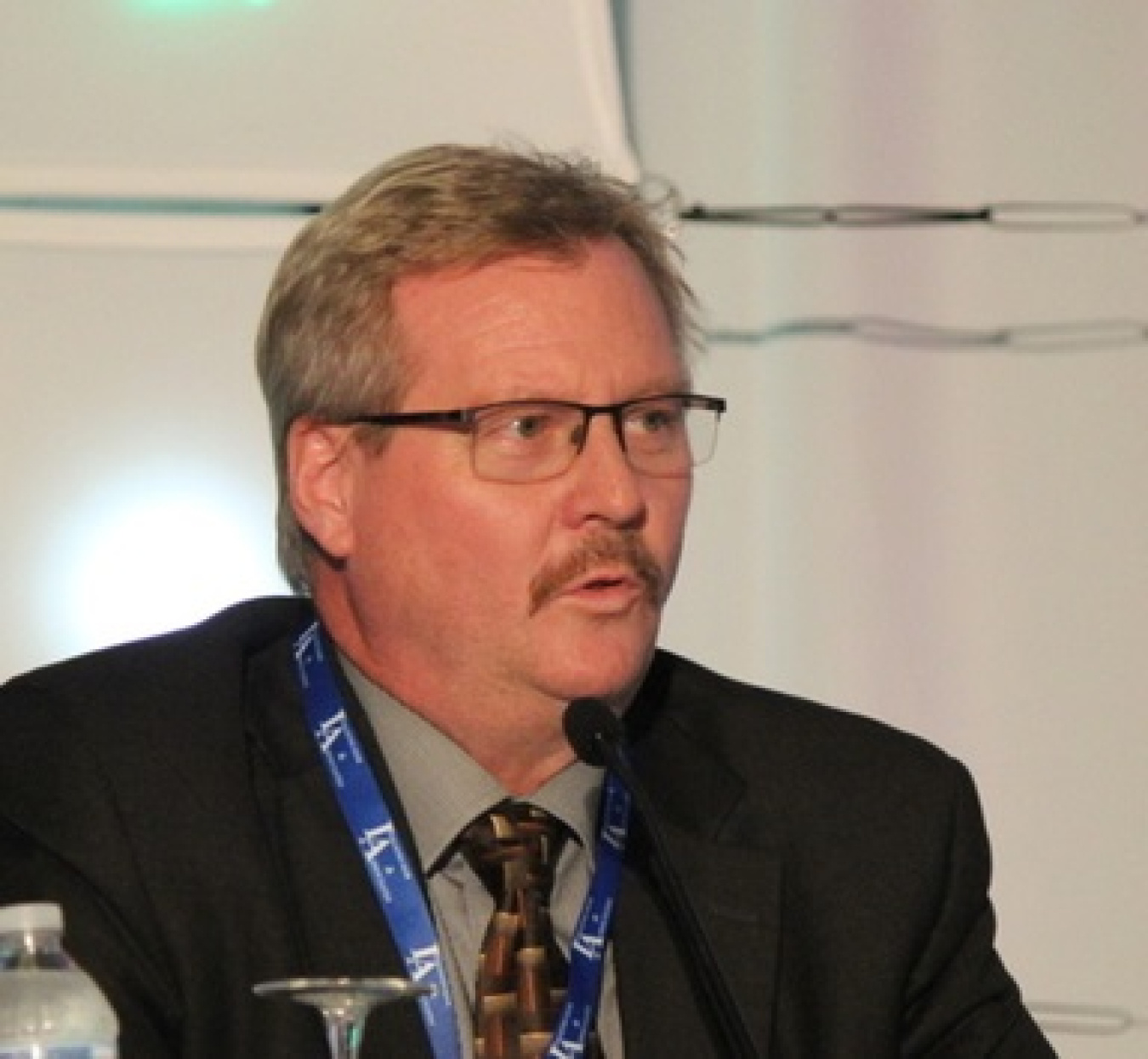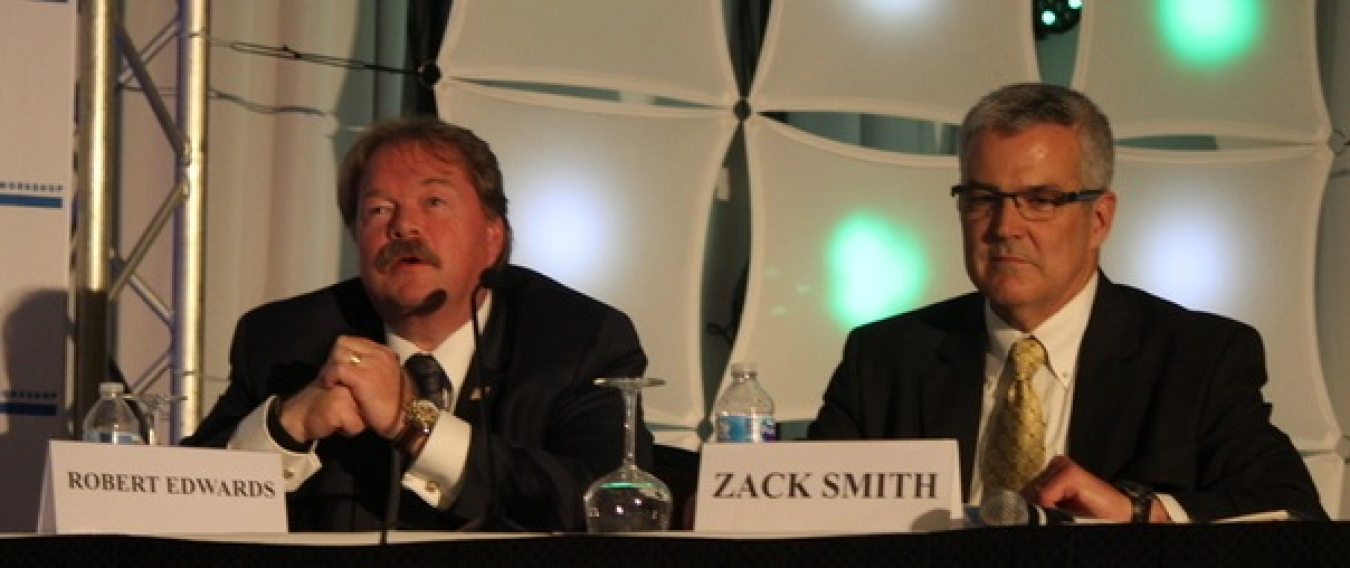– EM federal and contractor leaders from several sites highlighted major successes.
Office of Environmental Management
September 17, 2019ALEXANDRIA, Va. – EM federal and contractor leaders from several sites highlighted major successes in the cleanup program during a panel session at this year’s National Cleanup Workshop.
Although they have different missions, the Idaho National Laboratory (INL) Site, Portsmouth/Paducah Project Office (PPPO), Oak Ridge Office of EM (OREM), and EM Los Alamos Field Office have all demonstrated significant cleanup progress.
INL Site
DOE-Idaho EM Manager Jack Zimmerman described a collaborative relationship that includes the state of Idaho, DOE, and employees of the Idaho Cleanup Project that has led to mission success at the INL Site.
Zimmerman discussed a recent 50-day demonstration of the Integrated Waste Treatment Unit (IWTU), which was built to treat 900,000 gallons of radioactive liquid waste from nearby underground waste tanks. In the demonstration by Fluor Idaho, EM’s INL Site cleanup contractor, more than 63,000 gallons of simulant were successfully treated with steam-reforming technology.
“It showed that the process is going to work,” he said of the demonstration.

Zimmerman noted that workers have made more than 200 modifications to the facility since its construction. Following additional testing and modifications, IWTU will undergo another test run next year before actual waste treatment operations begin.
Fluor Idaho Environmental, Safety, and Health Director Kliss McNeel talked about the progress of EM’s targeted buried waste exhumation project, which began in 2005 to remove radioactive and hazardous materials buried in a shallow, unlined landfill. Crews have cleared waste from more than 5 acres of the landfill, with just 0.69 acres remaining for removal.
McNeel said many employees of Fluor Idaho’s workforce have been with the INL Site cleanup for more than 20 years.
“They love Idaho and have really become committed to this project,” she said.

PPPO
EM and contractor Mid-America Conversion Services (MCS) have been safely and successfully converting depleted uranium hexafluoride (DUF6) into a more stable oxide form for subsequent reuse or disposal. EM’s DUF6 conversion and storage facilities at the Portsmouth and Paducah former gaseous diffusion plant sites are addressing more than 840,000 metric tons of DUF6 stored in 67,000 cylinders.
PPPO Manager Robert Edwards and MCS President and Project Manager Zack Smith discussed safety and other improvements at the plants.
Following equipment and operational improvements, all seven conversion lines were operating simultaneously this year. The plants have achieved an operating “uptime” of 70 percent, up from 12 percent when MCS commenced its contract in 2017. Uptime represents how long the process operates over a given period of time.
The project is expected to exceed its fiscal 2019 production goal by emptying 1,136 cylinders and converting 14,369 metric tons of DUF6.
Oak Ridge
OREM Manager Jay Mullis said Oak Ridge’s EM developed a 10-year program plan issued in 2014 that established a roadmap for the next decade, ensuring all employees work toward common goals and objectives, making it possible to achieve ambitious visions in Oak Ridge.
Those visions include Vision 2020 and Vision 2024, each correlating to the year they are scheduled for completion. In 2016, Oak Ridge achieved Vision 2016, its goal to remove all of the site’s former gaseous diffusion uranium enrichment plants. This accomplishment marked the first time in the world this feat had been achieved.
EM and contractor UCOR are working toward the next major milestone known as Vision 2020. When complete next year, crews will have completed major cleanup at a former uranium enrichment site — now known as the East Tennessee Technology Park — another world first.
Oak Ridge has taken a creative approach to enable future reuse of the land by the community.
UCOR President and CEO Ken Rueter noted that as land is cleaned, it is transferred from government ownership back to the community as part of a multi-use industrial park. The site will include 1,500 acres for industrial development, 3,500 acres for conservation and recreation, and 100 acres for historic preservation efforts. Oak Ridge has already made tremendous progress toward that goal, having transferred more than 1,200 acres and 14 facilities totaling 332,000 square feet to private companies that have created more than 300 jobs.
Vision 2024 focuses on cleanup at DOE’s Oak Ridge National Laboratory and Y-12 National Security Complex — two important research and national security sites for the U.S.
EM and UCOR’s strong partnership and clear visions have made it possible to achieve ambitious goals, make tremendous progress toward EM’s mission, and help usher in new opportunities for the region.
Los Alamos
Doug Hintze, manager of the EM Los Alamos Field Office, and Glenn Morgan, president of legacy cleanup contractor Newport News Nuclear BWXT-Los Alamos (N3B), highlighted progress with an interim measure to contain and control migration of a contaminant plume in groundwater. The system is located along the southern edge of the plume beneath Sandia and Mortandad canyons near the boundary between DOE's Los Alamos National Laboratory (LANL) and the Pueblo de San Ildefonso.
To date, more than 100 million gallons of contaminated water have been treated, and EM is seeing better-than-expected plume mitigation with the interim measure, which helps engineers prepare the final remediation design.
The contaminant hexavalent chromium was first detected in the groundwater in 2005. It resulted from a non-nuclear power plant at LANL. From 1956 to 1972, workers periodically flushed chromium-contaminated water from cooling towers into Sandia Canyon. Chromium was commonly used as a corrosion inhibitor. LANL ceased releasing chromium-contaminated water in 1972.
Following the discovery of the contamination, EM installed several groundwater monitoring wells to better characterize the extent of the contamination and to determine how far the contaminant had moved. An extensive groundwater model was developed to help determine the optimum location of additional wells and better understand the extent of a contaminant plume.

